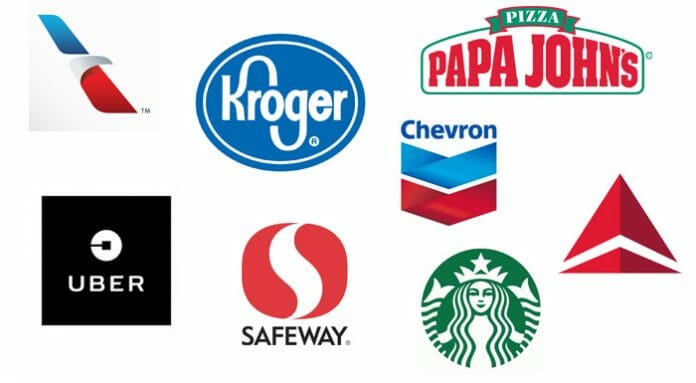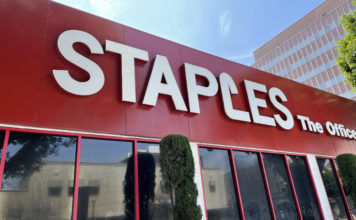
TravelingForMiles.com may receive commission from card issuers. Some or all of the card offers that appear on TravelingForMiles.com are from advertisers and may impact how and where card products appear on the site. TravelingForMiles.com does not include all card companies or all available card offers.
Some links to products and travel providers on this website will earn Traveling For Miles a commission which helps contribute to the running of the site – I’m very grateful to anyone who uses these links but their use is entirely optional. The compensation does not impact how and where products appear on this site and does not impact reviews that are published. For more details please see the advertising disclosure found at the bottom of every page
Not everyone new to miles & points is a fresh-faced graduate or teenager looking for their first credit card so this post is aimed at those with a solid credit score (and history) but who haven’t really investigated the miles & points world to any great extent.
 Everyone wants the caviar travel-style and the first step is having the right credit cards
Everyone wants the caviar travel-style and the first step is having the right credit cards
The days of earning hundreds of thousands of miles just from flying are over for most of us so, like it or not, the majority of our earnings now have to come from credit card bonuses and credit card spend. This may not be what you want to hear but, sadly, it’s true.
Within the miles & points world there are three main reasons to get a credit card:
- For the signup bonus
- For the benefits that the card bestows (airport lounge access, insurance etc..)
- For the earnings from day-to-day spending
This post will focus on the last category: day-to-day spending.
While signup bonuses can be great to give your miles & points balances a one-time boost, what keeps those balances ticking over are the earnings from using the cards on a daily (or at least weekly) basis.
Think About The Points You Want To Earn
Different credit cards offer different types of earning opportunities so you need to consider which you think will benefit you the most.

Here are the options:
- Cashback credit cards – these will give you a percentage of your credit card spend back as a cash rebate
- Airline credit cards – these are cards branded with a specific airline and will earn you miles in that airline’s loyalty program.
- Hotel credit cards – these are cards branded with a specific hotel chain and will earn you points in that hotel chain’s loyalty program.
- Bank credit cards with transferable currencies – these are credit cards issued by the likes of Citi, Chase and Amex which earn points in the rewards programs run by the issuing banks. These points can be transferred into a variety of airline and hotel loyalty programs.
I prefer to put most of my spend on to cards that offer me transferable currencies from Amex, Chase and Citi. There are three main reasons for this:
- These currencies are the most flexible – I can use them with numerous airlines and hotel chains or with the banks themselves.
- These currencies are least prone to sudden devaluations – airlines and hotels like to devalue their loyalty programs on an all too frequent basis so holding a transferable currency gives me the option to avoid a recently devalued program if it no longer offers me value.
- I can get more value out of these currencies than a cashback credit card will offer (usually 2%).
Think About What You Spend Your Money On
For most people these are 7 categories into which most of their monthly spending will fall (in no particular order):
- Mortgage/rent
- Car lease
- Healthcare/insurances
- Groceries
- Gas
- Travel
- Dining out
 I spend quite a bit on travel every year so having credit cards that reward well in that category is important to me
I spend quite a bit on travel every year so having credit cards that reward well in that category is important to me
Not all of these costs can be paid using a credit card (you’ll find it hard to pay your mortgage, rent, healthcare or your car lease on a credit card) but that’s not important here.
What’s important is that you make sure that you make the most of the costs that you can charge to a credit card….and that means making sure you have the right cards in your wallet.
Which Credit Card For Groceries?
I would choose one of the two Amex Everyday credit cards which earn American Express Membership Rewards points (which transfer into a good number of other loyalty programs) and which also offer good earning rates for spending at grocery stores.
Amex Everyday Preferred Credit Card

Cost:
- Annual fee of $95
Main Benefits:
- 3 points/$ spent at US Supermarkets up to a spend of $6,000 (then 1 point/$)
- 2 points/$ spent at US gas stations
- 1 point/$ spent everywhere else
- 50% extra points if you make 30 or more purchases in a billing period.
Making 30 or more purchases on this credit card in a single billing period isn’t hard if you use the self check-out aisle at supermarkets (turn your shopping into multiple transactions) and it also isn’t hard if you use the card for small insignificant purchases ($1 -$2) like parking and Amazon.com e-gift cards.
Essentially what this means is that you’re earning 4.5 Amex Membership Rewards points per dollar you spend at grocery stores and 3 points per dollar you spend at gas stations….and that’s very hard to beat.
If you’d rather not pay an annual fee then there’s always the option of the other Amex Everyday credit card:
Amex Everyday Credit Card

Cost:
- No annual fee
Main Benefits:
- 2 points/$ spent at US Supermarkets up to a spend of $6,000 (then 1 point/$)
- 1 point/$ spent everywhere else
- 20% extra points if you make 20 or more purchases in a billing period.
Just like with the “preferred” version of this card, making 20 or more purchases on this credit card in a single billing period isn’t hard so, essentially, this card allows you to earn 2.4 Amex Membership Rewards points per dollar spent at grocery stores.
Warning: Stores like Costco, Wal-Mart and Sams Club are not categorized as grocery stores.
Which Credit Card For Gas?
There is one credit card that sits clearly above the others when it comes to value for money in this category:
Citi ThankYou Premier Credit Card

Cost:
- Annual fee of $95 (waived in the first year)
Main Benefits:
- 3 points/$ spent on travel…including gas stations
- 2 points/$ spent on dining and entertainment
- 1 point/$ spent everywhere else
- No foreign transaction fees
Citi ThankYou points transfer over to a good number of other loyalty programs (including Singapore Airlines) and they’re a good, flexible currency to collect.

At $95 the annual fee isn’t too bad and, because it’s waived for the first year, you can try this card out for free (if you don’t like the card or don’t feel you’re getting much use out of it you can cancel with no penalty after the first year).
This card doesn’t charge foreign transaction fees (so it’s very useful if/when you travel abroad), it offers bonus points for entertainment spend (movie theatres etc..) and, because the bonus categories are so strong it’s a good back up for the card I prefer to use for travel and dining.
Which Credit Card For Travel & Dining?
If you’re still a bit nervous about applying for multiple credit cards (and there’s nothing wrong if you are) then you’ll do ok if you only hold the Citi ThankYou Premier card and one of the Amex Everyday cards to get you started…..but you should still consider this next credit card I’m going to mention.
Chase Sapphire Reserve Credit Card

I love this credit card and it never leaves my wallet but I’m going out on a limb here by suggesting it for those new to this hobby.
The reason I’m going out on a limb is because the card comes with a big $450 annual fee but, as I’m about to demonstrate, you’ll get all of that back (and more) if you use the card correctly.
Cost:
- Annual fee of $450
Main Benefits:
- 3 points/$ spent on travel not including gas stations
- 3 points/$ spent on dining
- 1 point/$ spent everywhere else
- Primary rental car insurance
- No foreign transaction fees
- $300 annual travel credit
- Priority Pass membership which gives you (and at least 10 guests) access to over 1,000 airport lounges worldwide
This card may come with a hefty annual fee but I don’t know anybody who doesn’t spend at least $300 on travel (flights, cruises, trains, buses, Uber, Lyft, car parking, car rentals etc…) in a year.
Every year the card will rebate you all of your travel (up to a cost of $300) within a day of the charge being put on to the card.
Here’s an example from my own card statement earlier this year where I changed $40 from the Andaz West Hollywood to my Chase Sapphire Reserve card:

And here’s an example of an Uber trip being rebated too:

This effectively reduces the annual fee down to $150 and, for that, you get primary rental car cover, the best Priority Pass membership available, no foreign transaction fess and great spending bonuses on dining and travel.
On top of all this you earn my favorite transferable currency – Chase Ultimate Rewards
Chase Ultimate Rewards Points transfer into 13 other loyalty programs (at the time of writing) including my favorite transfer option – World of Hyatt.
I prefer Chase Ultimate Rewards to Citi ThankYou Points so this is my go to card for travel and dining spend (with the exception of airfare which I’m currently charging to my Amex Platinum Card….but that’s not a card I suggest for those new to this hobby).
One Other Card To Consider
Chase Freedom Credit Card
 Cost:
Cost:
- No annual fee
Main Benefit:
- 5% cashback on up to $1,500 in combined purchases in bonus categories each quarter you activate.
This quarter the 5% cashback categories have been: Gas stations, Internet/Cable/Phone Services & Chase Pay/Apple Pay/Android Pay/Samsung Pay
While the 5% cashback is nice to have on a card that costs you nothing to hold there is an added way to get more from this card.

If you hold one of the Chase Sapphire cards (like the Chase Sapphire Reserve I mentioned earlier) the cashback earned can be converted into Chase Ultimate Rewards points so, effectively, you would be earning 5 Ultimate Rewards points/dollar on the quarterly bonus categories – that’s hard to beat when you’re not paying an annual fee.
A Health Warning & Disclaimer
Miles & points credit cards usually come with significant interest rates attached to them so, if you’re not someone who can clear his or her credit card bill at the end of every month, these cards are not for you.
Earning 1% – 5% in benefits isn’t going to make up for the 17%+ in interest you will pay if you don’t pay off your debt.
Also, I’m not a financial adviser so you shouldn’t take anything written above as financial advice.
Before you decide to apply for a credit card you should make sure you understand what you’re applying for and understand if it suits your circumstances or not.
Bottom Line
The key to big miles & points boosts may be the sign-up bonuses that accompany some credit cards but the key to ongoing earnings is to make sure you have the right cards in your wallet.
Ideally you should consider where you spend your money and tailor your credit card choices to maximise your earnings from that spend.
Don’t go wild with credit cards that charge high annual fees (make sure you explore the free options too) and, at least when you’re starting out, don’t hold too many cards at once – get used to using different credit cards for different kind of spend (most people are used to pulling out the same card over and over again regardless of where they’re shopping).
Most importantly of all, regardless of which credit cards you decide to go for, make sure you learn the rules of the program(s) in which you’re earning miles & points as that’s the only way you’ll make the most of your earnings.
Which credit cards to get is always a hot-button topic as it often comes down to personal preferences so, with that in mind, what would you recommend to a newbie if not the cards I’ve mentioned above?


![The ideal 4 card American Express Membership Rewards team [Updated] a glass door with a picture of a man](https://travelingformiles.com/wp-content/uploads/2021/06/Amex-Centurion-Lounge-SFO-featured-741-218x150.jpg)





![The ideal 4 card American Express Membership Rewards team [Updated] a glass door with a picture of a man](https://travelingformiles.com/wp-content/uploads/2021/06/Amex-Centurion-Lounge-SFO-featured-741-356x220.jpg)








